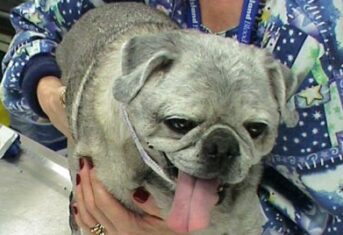The Truth About Hypoallergenic Pets and How to Reduce Pet Allergens

The Truth About Hypoallergenic Pets and How to Reduce Pet Allergens
66% of households in the United States have one or more pets. Many more families would like to add a pet to their family, but allergies prevent the addition of a furry family member. In this situation families often ask, “Is there a hypoallergenic dog or cat breed that won’t irritate our families’ allergies?” I find this terminology strange because hypo- means less than normal but possibly still present. What someone with a pet allergy wants is a non-allergenic dog or cat, and no – there are no non-allergenic dogs and cats. However, some may be less allergenic than others, that is, hypoallergenic. I’ll discuss in today’s blogpost.
Feline Allergens
In cats, two genes named Ch1 and Ch2 control the production of Fel d 1, the allergy-inducing protein present in cats’ saliva, anal glands, sebaceous glands, skin and fur. The sebaceous glands, which secrete an oily substance called sebum to lubricate hair follicles and skin cells, produce most of this protein. Fel d 1 is the major but not only allergen produced by cats, and all cats do not produce equal amounts of Fel d1. Scientists hypothesize that certain cats and cat breeds with mutations in Ch1 and Ch2 genes could secrete a Fel D 1 molecule that might be less allergenic, but these connections are still vague and need more study. Unfortunately, there is no non-allergenic cat breed.
Hypoallergenic Cat Breeds
The study referenced above identifies Siberians as a hypoallergenic cat breed, based on anecdotal evidence from breeders. A recent post on PetMD provides a list of ten hypoallergenic breeds of cats. Their list includes Siberians, as well as Burmese cats, which is the cat breed that makes my nose run and eyes itch! Proof that the hypoallergenic distinction is highly subjective.
Canine Allergens
Like cats, dogs produce multiple allergens that result in human allergies. However, unlike cats, there is no clear major canine allergen. In dogs, eight molecules have been identified as causing human allergies, Can f 1-8. I suspect, like cats, different dogs produce different mixes of allergens and people with mild allergies can tolerate a dog with low allergen production. This is likely linked to breed and explains why some allergic humans can tolerate a dog of a certain breed, but not a dog of other breeds.
Hypoallergenic Dog Breeds
A variety of dog breeds have been touted as hypoallergenic, including Maltese, poodles, Portuguese water dogs, soft coated wheaten terriers, schnauzers, Chinese crested dogs, among others. Sadly, science does not support their supposed hypoallergenic status, as a study showed that homes with a hypoallergenic pet dog do not have lower levels of Can f 1 than homes with an allergenic breed.
Hairy Dogs versus Furry Dogs
Many dogs identified as hypoallergenic are dogs with hair, or a continuously growing coat, such as the poodle. If not clipped about every 4-8 weeks, these dogs start to look like a Highland sheep after a Scottish winter. That is, they don’t shed, and any excess hair must be removed in a deliberate (and contained) manner at the groomer.
On the other hand, dogs identified as causing allergies tend to have fur, or a coat that grows only to a point and then sheds. Think about Labrador retrievers. Their fur grows to a couple inches in length then falls out, all over your house. More shedding means more allergen distributed on your sofa, in your bed and on your clothes.
This difference may make dogs with hair more tolerable for those with mild allergies than dogs with fur.
4 Ways to Minimizing Canine Allergens
Although there is no such thing as a non-allergenic dog, there are steps you can take to make any dog less allergenic. These include:
- Daily brushing to remove loose hairs and dandruff.
- Bathing your pet once or twice a week to wash off allergens.
- Clipping the coat short decreases allergens by decreasing hair in the home.
- Since anal glands are a source of dog and cat allergens, have your veterinarian express the anal glands regularly.

































